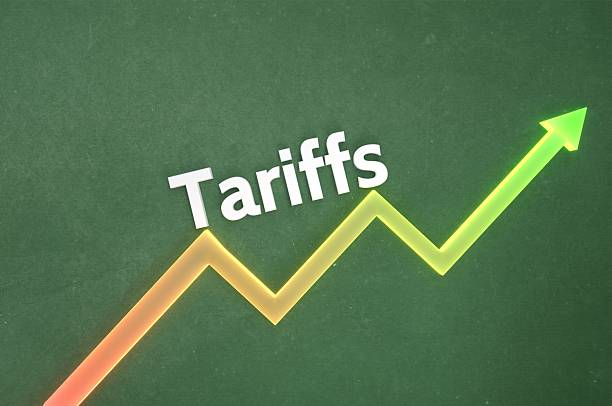Introduction
Nuclear Expansion is once again at the center of South Africa’s national conversation as the government prepares to announce major developments in the country’s nuclear-energy roadmap. Electricity and Energy Minister Kgosientsho Ramokgopa will be unpacking two critical updates: the revival of the long-stalled Pebble Bed Modular Reactor (PBMR) program and the Environmental Impact Assessment approval for a 4,000 MW nuclear site at Duynefontein. These two actions, taken together, represent the strongest indication yet that nuclear power is returning as a strategic pillar of South Africa’s future energy security.
Load shedding, aging coal plants, grid instability and growing electricity demand have pushed policymakers toward solutions that provide reliable, long-term baseload power. Nuclear energy, once sidelined due to cost and political concerns, is now being reconsidered in a more urgent context. This article breaks down the key developments, their implications, and why they matter for South Africa’s economy, environment, and long-term planning.
Nuclear Expansion and the Revival of the PBMR Project
Nuclear Expansion efforts gained new momentum with the decision to lift the PBMR project out of care-and-maintenance. The PBMR was once South Africa’s most ambitious nuclear innovation: a high-temperature, helium-cooled small modular reactor designed to produce power more safely, efficiently and cost-effectively than conventional reactors. After years of investment, the project stalled due to financial constraints and shifting political priorities.
Now, bringing PBMR back signals a renewed focus on modular nuclear technology, aligning South Africa with global trends toward SMRs that promise shorter construction times, enhanced safety features, and scalable capacity. PBMR technology could position South Africa as a leader in advanced reactor manufacturing and intellectual property, creating opportunities in engineering, research, local component manufacturing and export markets.
If reactivated under structured governance, the PBMR could also support industrial clusters, mining operations, hydrogen production and remote-location energy needs. This revival is not just about revisiting old technology — it is about integrating South Africa into the next wave of global nuclear innovation.
Nuclear Expansion at Duynefontein and the 4,000 MW Site Approval
A second major step in Nuclear Expansion is the confirmed environmental approval for the 4,000 MW nuclear site at Duynefontein, located next to Koeberg. This site has been under environmental evaluation for years, with multiple appeals and reviews. Approval signals regulatory readiness for nuclear construction to begin when procurement, funding and technology decisions are finalized.
Duynefontein is strategically chosen because it already hosts critical nuclear infrastructure, grid connectivity and operational expertise from Koeberg. The new site could house either a large dual-unit nuclear plant or multiple modular reactors totaling 4,000 MW.
This approval does not mean immediate construction, but it clears one of the largest hurdles in large-scale nuclear development: environmental compliance. It also strengthens government’s position in future procurement negotiations and signaling to investors that nuclear is officially back on the roadmap.
Nuclear Expansion in the Context of South Africa’s Energy Crisis
Nuclear Expansion is gaining traction because South Africa urgently needs stable, baseload power. Years of load shedding have harmed the economy, weakened investor confidence, and frustrated households. With aging coal plants nearing retirement and limited gas infrastructure, the government views nuclear as one of the only long-term, non-intermittent sources capable of supporting grid stability.
While renewables are expanding rapidly, they cannot yet independently balance grid demands without large-scale storage. Nuclear, by contrast, offers 24/7 operation, high energy density, and decades-long operational life. A combination of nuclear, renewable, storage and flexible generation is ultimately needed — and nuclear provides the backbone for that mix.
Rebuilding energy security is a national priority. These nuclear developments reflect strengthened political will to move forward, rather than repeat years of stalled decisions.
Nuclear Expansion and Opportunities for Skills, Jobs, and Industrial Growth
A renewed Nuclear Expansion plan is not just about generating electricity; it is also about economic development. Large nuclear builds require thousands of skilled workers, from welders and electricians to nuclear engineers and project managers.
PBMR revival alone could reopen pathways for:
- Advanced manufacturing
- Robotics and process automation
- High-precision component fabrication
- Export-ready technological innovation
The Duynefontein 4,000 MW site, once procurement begins, would involve construction, civil works, safety systems installation, and long-term operational jobs.
South Africa stands to benefit from:
- Skills development in nuclear physics, engineering and technical trades
- Partnerships with international nuclear vendors
- Local supply chain development
- Regional leadership opportunities in African nuclear cooperation
This is part of a broader industrialisation strategy linked to high-tech manufacturing and job creation.
Nuclear Expansion and the Role of Small Modular Reactors
One of the biggest shifts in global energy policy is the move toward Small Modular Reactors (SMRs). Nuclear Expansion in South Africa is aligning with this trend through PBMR revival and potential SMR deployment at sites like Duynefontein.
SMRs offer several advantages:
- Lower upfront capital costs
- Factory-built components
- Faster construction
- Increased safety through passive systems
- Flexible deployment, even in smaller grid regions
This makes them suitable for mining operations, industrial hubs, and remote regions that cannot justify large nuclear stations. SMRs also integrate well with hydrogen production facilities, which require reliable high-temperature heat — something SMRs excel at providing.
South Africa could become a continental leader in SMR development if it leverages the PBMR legacy and global demand for modular nuclear solutions.
Nuclear Expansion Challenges: Public Trust, Costs, and Political Debate
No Nuclear Expansion plan is immune to criticism. Concerns remain about:
- High capital costs
- Long construction timelines
- Safety and waste management
- Procurement transparency
- Public trust
Repeated delays in past nuclear decisions and governance issues have made some South Africans skeptical of new nuclear investments. Environmental groups will continue pushing for oversight, transparency and safety guarantees.
Government must therefore ensure:
- Open communication
- Transparent procurement processes
- Evidence-based financial modelling
- Public engagement and environmental accountability
Without these elements, nuclear projects could face legal obstacles that derail timelines and increase costs.
Nuclear Expansion and Its Role in Climate and Decarbonization Goals
Nuclear Expansion is also tied to South Africa’s climate commitments. As coal stations retire, nuclear provides one of the few large-scale low-carbon baseload options. Renewables alone cannot sustain the full load profile without support from firm generation like nuclear.
South Africa’s climate mission requires:
- Low-carbon power
- Long-term system reliability
- Reduced diesel peaker use
- A just transition for workers
Nuclear plays a direct role by providing clean stability and enabling higher penetration of renewables. Without large-scale zero-carbon baseload, the country risks falling short of its emission targets.
Nuclear Expansion and South Africa’s Emerging Leadership in Africa
If South Africa successfully advances Nuclear Expansion, it could shape nuclear development across Africa. Many countries, including Egypt, Kenya, Ghana and Namibia, are exploring nuclear or SMR programs. South Africa has unique advantages:
- Existing nuclear plant (Koeberg)
- Operational regulatory framework
- Skilled workforce
- PBMR intellectual property
- Nuclear training institutions
This positions South Africa to become a regional nuclear hub offering training, support and technology partnerships.
FAQs
1. Why is Nuclear Expansion important for South Africa?
Nuclear Expansion strengthens long-term energy security and reduces dependence on aging coal plants.
2. How does Nuclear Expansion involve the PBMR project?
Government is reviving PBMR development to re-enter global SMR markets and support modular nuclear deployment.
3. What does the Duynefontein approval mean for Nuclear Expansion?
The 4,000 MW site approval clears a major regulatory hurdle for future nuclear construction.
Conclusion
Nuclear Expansion is rapidly becoming a defining feature of South Africa’s future energy strategy. The PBMR revival and the approval of the 4,000 MW Duynefontein site mark a turning point in how the country approaches long-term power security. These developments signal government’s intention to pursue reliable, clean and stable baseload power while also opening doors for industrial growth, skills development and regional nuclear leadership. With transparent planning, responsible investment and public engagement, Nuclear Expansion could play a central role in stabilizing South Africa’s grid and reshaping its economic trajectory.




